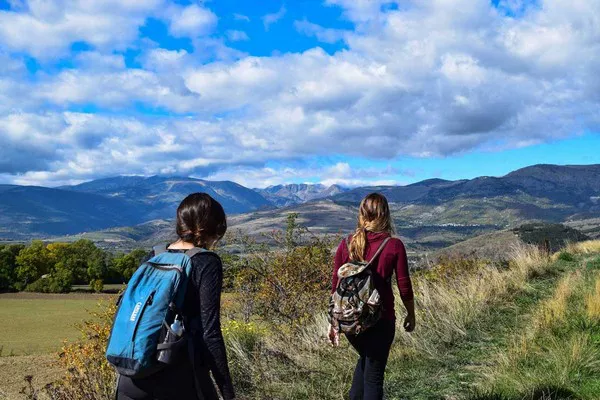Hiking is not only a wonderful way to connect with nature and stay physically active but also an exercise that engages various muscle groups throughout the body. One area of interest for many fitness enthusiasts is the impact hiking has on the gluteal muscles, often referred to as the glutes. These muscles play a crucial role in stabilizing the hips, supporting the pelvis, and facilitating movement in the lower body. This article delves into the science behind hiking and its potential benefits for building stronger and more defined glutes.
Understanding the Gluteal Muscles
Before diving into the effects of hiking on the glutes, it’s essential to understand the anatomy of these muscles. The glutes consist of three primary muscles:
- Gluteus Maximus: This is the largest muscle in the gluteal group and is responsible for hip extension and external rotation.
- Gluteus Medius: Located on the outer surface of the pelvis, the gluteus medius assists in hip abduction and stabilization.
- Gluteus Minimus: Situated beneath the gluteus medius, this muscle also aids in hip stabilization and abduction.
These muscles work together to support various movements, including walking, running, and climbing. Strengthening and toning the glutes can contribute to improved posture, enhanced athletic performance, and reduced risk of injury.
The Mechanics of Hiking and Glute Activation
Hiking involves traversing different terrains, which requires continuous engagement of the lower body muscles, particularly the glutes. The following factors contribute to the activation of the gluteal muscles during hiking:
1. Uphill Climbing: Ascending inclines during a hike places significant demand on the gluteus maximus. This muscle engages to extend the hip joint and propel the body upwards against gravity. Uphill hiking not only strengthens the glutes but also improves cardiovascular fitness.
2. Uneven Terrain: Negotiating uneven surfaces like rocks, tree roots, or trails with varying elevation engages the stabilizing muscles of the hips, including the gluteus medius and minimus. These muscles work to maintain balance and prevent the hips from tilting excessively.
3. Descending: While descending a trail, the glutes are engaged eccentrically to control the body’s descent and prevent excessive stress on the knees and lower back. This eccentric contraction helps in strengthening the glutes and improving overall lower body control.
Scientific Evidence of Gluteal Activation During Hiking
Several studies have investigated muscle activation patterns during hiking to understand its impact on lower body muscles. Research published in the Journal of Strength and Conditioning Research (JSCR) compared muscle activation levels during treadmill walking and overground hiking. The findings revealed that hiking significantly increased gluteus maximus activation compared to walking on a flat surface.
Another study published in the International Journal of Sports Medicine analyzed muscle activation during different phases of hiking, including ascent, descent, and level walking. The researchers concluded that uphill hiking produced the highest gluteal muscle activation, particularly in the gluteus maximus and medius.
Furthermore, electromyography (EMG) studies have demonstrated that hiking on uneven terrain elicits greater muscle activation in the gluteal muscles compared to walking on flat surfaces. These findings suggest that hiking, especially on challenging terrain, can be an effective way to target and strengthen the glutes.
Benefits of Strong Glutes for Hikers
Building strong gluteal muscles through hiking offers numerous benefits for hikers of all skill levels:
1. Improved Endurance: Strong glutes contribute to enhanced endurance and stamina, allowing hikers to tackle longer trails with less fatigue.
2. Enhanced Stability: A robust gluteal region provides better stability and balance on uneven terrain, reducing the risk of slips or falls during hikes.
3. Injury Prevention: Strengthening the glutes helps in preventing common hiking-related injuries such as knee pain, IT band syndrome, and lower back strain.
4. Optimal Performance: Well-developed glutes improve overall performance by increasing power and efficiency in uphill climbs and descents.
Incorporating Hiking into Your Fitness Routine
To maximize the benefits of hiking for glute development, consider the following tips:
1. Choose Varied Terrain: Opt for trails that include both uphill climbs and descents to target different aspects of gluteal muscle strength.
2. Use Proper Form: Maintain an upright posture while hiking and engage the glutes consciously with each step.
3. Add Resistance: For enhanced glute activation, consider wearing a backpack with added weight or using trekking poles to engage the upper body and core.
4. Include Regular Hiking: Aim for consistent hiking sessions throughout the week, gradually increasing intensity and duration to challenge the gluteal muscles effectively.
Conclusion
Hiking is not only a fulfilling outdoor activity but also a potent exercise for strengthening and sculpting the gluteal muscles. By engaging in regular hikes on varied terrains, individuals can experience noticeable improvements in gluteal strength, endurance, and stability. Whether you’re a seasoned hiker or a beginner looking to enhance your fitness routine, incorporating hiking into your regimen can lead to a more robust lower body and overall physical well-being. Remember to start gradually, listen to your body, and enjoy the journey toward stronger, healthier glutes through the adventure of hiking.

